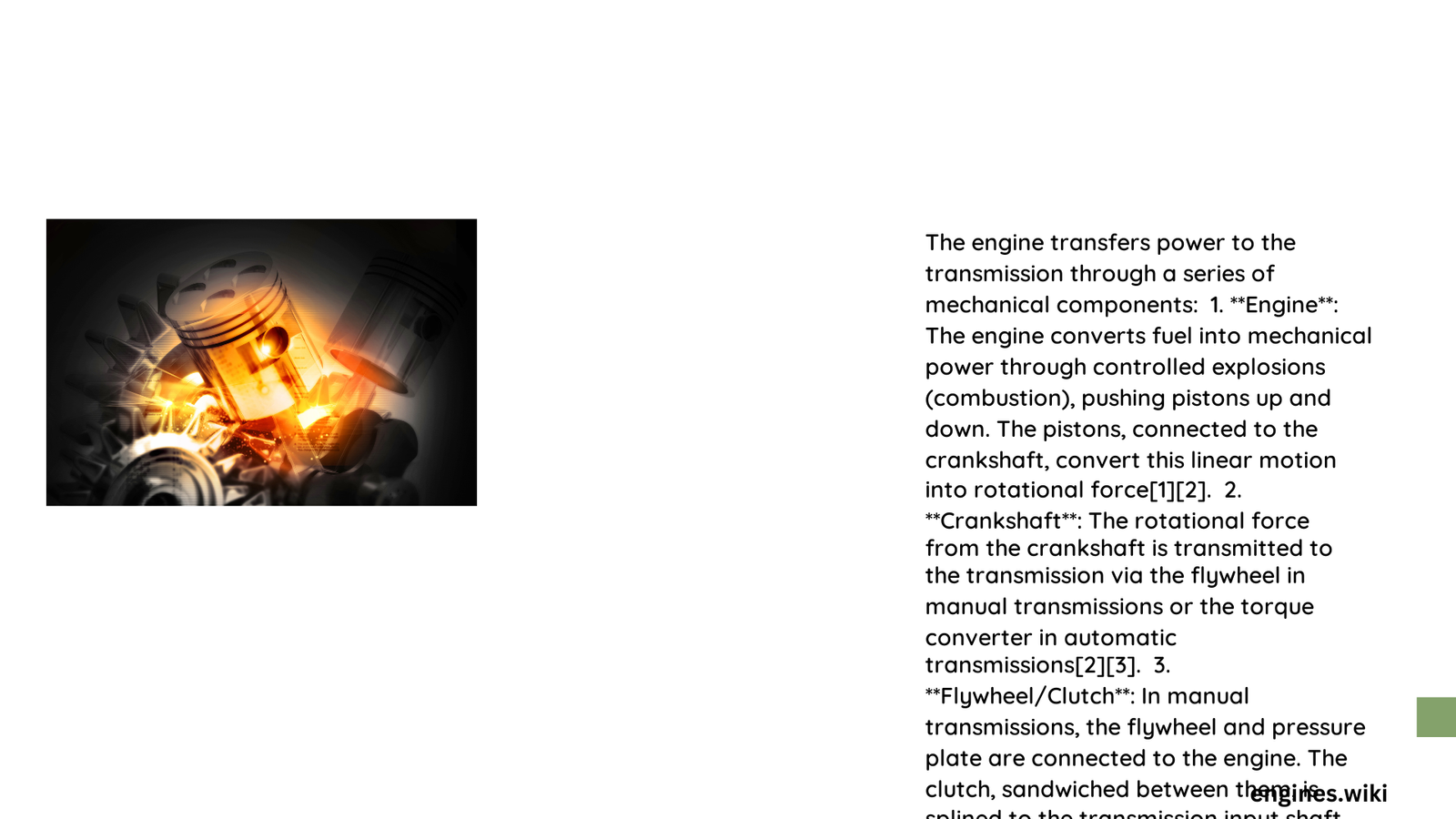Modern vehicle powertrains represent a complex symphony of mechanical interactions where engine-generated rotational energy seamlessly transforms into vehicular motion. The power transfer mechanism involves sophisticated hydraulic systems, precision-engineered components, and fluid dynamics that enable smooth acceleration and consistent performance across varying driving conditions.
What Enables Initial Power Transmission?
Torque Converter: Primary Power Transfer Mechanism
The torque converter serves as the critical interface between the engine’s crankshaft and transmission, facilitating power transfer through advanced fluid coupling principles. This hydraulic device consists of three primary components:
| Component | Function | Key Characteristic |
|---|---|---|
| Impeller | Connects to engine crankshaft | Generates centrifugal fluid motion |
| Turbine | Linked to transmission input shaft | Converts fluid kinetic energy to mechanical rotation |
| Stator | Positioned between impeller and turbine | Redirects fluid flow for enhanced torque multiplication |
How Does Fluid Dynamic Transfer Mechanical Energy?
When the engine runs, the impeller spins rapidly, propelling transmission fluid outward through centrifugal force. This fluid movement creates kinetic energy transferred to the turbine, which rotates the transmission’s input shaft. The stator plays a crucial role by redirecting fluid flow, optimizing energy transfer and multiplying torque during low-speed acceleration.
Quantitative Power Transfer Characteristics
Key performance metrics for power transmission include:
- Torque Multiplication Range: 1.8 to 2.5 times initial engine torque
- Fluid Viscosity: 7.5-10 centistokes at 100°C
- Operational Temperature: 175-250°F (80-120°C)
What Determines Transmission Efficiency?

Factors Influencing Power Transfer
Several critical factors impact the efficiency of power transmission:
- Fluid Quality
- Synthetic transmission fluids reduce friction
- Maintains consistent viscosity across temperature ranges
-
Enhances heat dissipation capabilities
-
Mechanical Tolerances
- Precise component alignment
- Minimal internal clearances
-
Reduced mechanical friction
-
Gear Ratio Optimization
- First gear: Typically 3.5:1 ratio
- Subsequent gears progressively reduce torque multiplication
- Enables smooth acceleration and speed progression
Computational Power Transfer Analysis
Consider a practical example:
– Engine Torque: 200 Nm
– First Gear Ratio: 3.5:1
– Calculated Wheel Torque: 700 Nm
This demonstrates how gear ratios dramatically amplify initial engine output during acceleration.
What Are Advanced Power Transfer Technologies?
Emerging Transmission Innovations
- Dual-clutch transmission systems
- Continuously variable transmissions (CVT)
- Hybrid powertrain configurations
Performance Implications
Modern power transfer technologies aim to:
– Minimize energy losses
– Improve fuel efficiency
– Enhance overall drivetrain responsiveness
Conclusion
Power transmission represents a sophisticated interplay of mechanical, hydraulic, and thermal engineering principles. Understanding these intricate mechanisms reveals the remarkable complexity behind seemingly simple vehicular motion.
Technical Expertise Insights
- Precision matters more than raw power
- Fluid dynamics are as crucial as mechanical components
- Continuous technological evolution defines automotive engineering
References:
– [SAE International Powertrain Research Papers]
– [Automotive Engineering Journal]
– [Society of Automotive Engineers Technical Publications]
